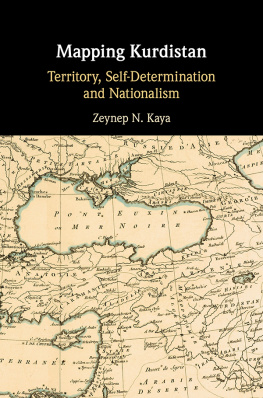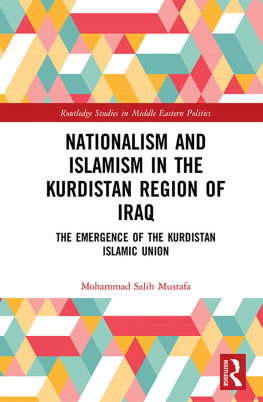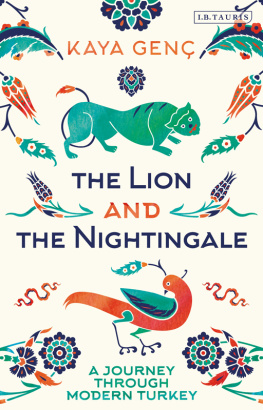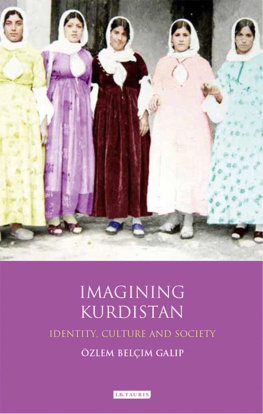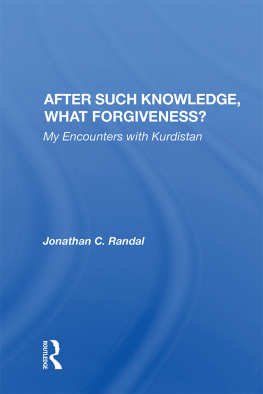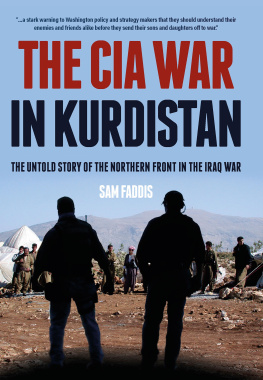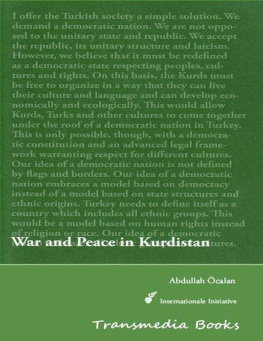Kaya - Mapping Kurdistan
Here you can read online Kaya - Mapping Kurdistan full text of the book (entire story) in english for free. Download pdf and epub, get meaning, cover and reviews about this ebook. year: 2020, publisher: Cambridge University Press, genre: Politics. Description of the work, (preface) as well as reviews are available. Best literature library LitArk.com created for fans of good reading and offers a wide selection of genres:
Romance novel
Science fiction
Adventure
Detective
Science
History
Home and family
Prose
Art
Politics
Computer
Non-fiction
Religion
Business
Children
Humor
Choose a favorite category and find really read worthwhile books. Enjoy immersion in the world of imagination, feel the emotions of the characters or learn something new for yourself, make an fascinating discovery.
Mapping Kurdistan: summary, description and annotation
We offer to read an annotation, description, summary or preface (depends on what the author of the book "Mapping Kurdistan" wrote himself). If you haven't found the necessary information about the book — write in the comments, we will try to find it.
Mapping Kurdistan — read online for free the complete book (whole text) full work
Below is the text of the book, divided by pages. System saving the place of the last page read, allows you to conveniently read the book "Mapping Kurdistan" online for free, without having to search again every time where you left off. Put a bookmark, and you can go to the page where you finished reading at any time.
Font size:
Interval:
Bookmark:

Mapping Kurdistan
Since the early twentieth century, Kurds have challenged the borders and national identities of the states they inhabit. Nowhere is this more evident than in their promotion of the Map of Greater Kurdistan, an ideal of a unified Kurdish homeland in an ethnically and geographically complex region. This powerful image is embedded in the consciousness of the Kurdish people, both within the region and, perhaps even more strongly, in the diaspora.
Addressing the lack of rigorous research and analysis of Kurdish politics from an international perspective, Zeynep N. Kaya focuses on self-determination, territorial identity and international norms to suggest how these imaginations of homelands have been socially, politically and historically constructed (much like the state territories the Kurds inhabit), as opposed to their perception of being natural, perennial or intrinsic. Adopting a non-political approach to notions of nationhood and territoriality, Mapping Kurdistan is a systematic examination of the international processes that have enabled a wide range of actors to imagine and create the cartographic image of greater Kurdistan that is in use today.
Zeynep N. Kaya is Senior Teaching Fellow in the Department of Development Studies at the School of Oriental and African Studies; Visiting Fellow at the Middle East Centre, London School of Economics and Political Science; and Academic Associate at Pembroke College, University of Cambridge. Her research focuses on the Kurds and identity politics in the Middle East from an international relations perspective and gendered drivers of conflict in Iraq.
Mapping Kurdistan
Territory, Self-Determination and Nationalism
Zeynep N. Kaya
London School of Economics and Political Science


University Printing House, Cambridge CB2 8BS, United Kingdom
One Liberty Plaza, 20th Floor, New York, NY 10006, USA
477 Williamstown Road, Port Melbourne, VIC 3207, Australia
314321, 3rd Floor, Plot 3, Splendor Forum, Jasola District Centre, New Delhi 110025, India
79 Anson Road, #0604/06, Singapore 079906
Cambridge University Press is part of the University of Cambridge.
It furthers the Universitys mission by disseminating knowledge in the pursuit of education, learning, and research at the highest international levels of excellence.
www.cambridge.org
Information on this title: www.cambridge.org/9781108474696
DOI: 10.1017/9781108629805
Zeynep N. Kaya 2020
This publication is in copyright. Subject to statutory exception and to the provisions of relevant collective licensing agreements, no reproduction of any part may take place without the written permission of Cambridge University Press.
First published 2020
Printed in the United Kingdom by TJ International Ltd, Padstow Cornwall
A catalogue record for this publication is available from the British Library.
ISBN 978-1-108-47469-6 Hardback
Cambridge University Press has no responsibility for the persistence or accuracy of URLs for external or third-party internet websites referred to in this publication and does not guarantee that any content on such websites is, or will remain, accurate or appropriate.
To Elif
Several wonderful people inspired and supported this book with whom I have discussed many of its aspects and who have given me immensely useful advice: my doctoral supervisors Fred Halliday and John Sidel and doctoral adviser John Breuilly, my doctoral examiners Charles Tripp and James Mayall and the two anonymous reviewers whose comments transformed the way I present the ideas in this book. Working with Fred Halliday was one of the biggest privileges of my life he was a great source of intellectual wisdom and inspiration, a huge support and a wonderful friend. I am also indebted to the editorial team at Cambridge University Press for taking me through the process with such expertise and ease, especially Maria Marsh, Daniel Brown and Atifa Jiwa. I would like to thank David McDowall, Mehrdad Izady, Laris Karaklis, The Kurdish Project for generously allowing me to use their maps in the book.
Big thanks go to my friends and colleagues at the London School of Economics: Robert Lowe for always being there for me throughout my career and the writing of this book; Ribale Sleiman-Haidar, Sandra Sfeir, Chelsea Milsom and Courtney Freer for being the best colleagues and friends; Toby Dodge for the wonderful guidance. It is impossible to mention all those who been part of my journey in writing this book, intellectually and emotionally. I am worried about omitting names but here it goes: to Jennifer Jackson-Preece, Margot Light, Denise Natali, Gne Murat Tezcr, Lily Ling, Djene Bajalan, Brendan OLeary, Joost Jongerden, David McDowall, Katerina Dalacoura and Yaniv Voller for discussing ideas that formed this book; to Jasmine Gani, Naz Masraff, Natali Pagliari, Claire Beaugrand, Outi Keranen, Chris Phillips, Kevork Oskanian, Ramon Pacheco-Pardo, Jeffrey Reeves for being wonderful PhD friends; and to Kimberly Hutchings, John Hutchinson and Christine Chinkin for supporting me throughout my career.
Special thanks also go to my family of friends who have surrounded me with love, laughter and wisdom. I am especially grateful to Charlie Miller, Rubina Fur, Sarah Latimer-Sayer, Bene Lassartesse-Jones and Marie Morice for being there for me in the final, most painful years of writing.
There are many other friends and colleagues whose names havent been mentioned here, and many scholars, researchers and practitioners I have met and with whom I have discussed the book and exchanged ideas. Their ideas and insights have inspired this book so much.
This book would not have been possible if it wasnt for my family, who deserve the biggest thanks special thanks to my parents and brother in Turkey for the limitless love and support, and putting up with the stressed version of me and my distractedness during holidays, as well as to my Irish family who have always been equally loving. Also thanks to my husband Matthew for reading (several!) earlier versions of the book, talking about it for numerous hours and for always encouraging and supporting me. I dedicate this book to my daughter Elif who has always cheered me up and was always ready to provide gems of wisdom in the hardest hours.
No work is ever entirely owned by one person, and I am indebted to all those fantastic people. Of course, any errors that remain are my own.
Transliteration was a challenging task for this book because it covered a long historical period (from mid-nineteenth century to present), a large geography and a wide range of different transliterations of Kurdish words in multiple languages Kurdish, Persian, Arabic, Turkish and Ottoman Turkish. This book is meant for both specialists and general readers; therefore, I adopted a basic transliteration method. I have preserved Ottoman Turkish, Arabic, Kurdish and Persian terms where possible for words commonly used in English as well as for place names, personal names, treaties, historical textbooks, names of associations, rebellions and movements. I have not used diacritics. I have followed the transliteration guidelines of the International Journal of Middle East Studies . My choice of transliteration is not intended to impose identity or nationality on the individuals, names and locations.
Font size:
Interval:
Bookmark:
Similar books «Mapping Kurdistan»
Look at similar books to Mapping Kurdistan. We have selected literature similar in name and meaning in the hope of providing readers with more options to find new, interesting, not yet read works.
Discussion, reviews of the book Mapping Kurdistan and just readers' own opinions. Leave your comments, write what you think about the work, its meaning or the main characters. Specify what exactly you liked and what you didn't like, and why you think so.

